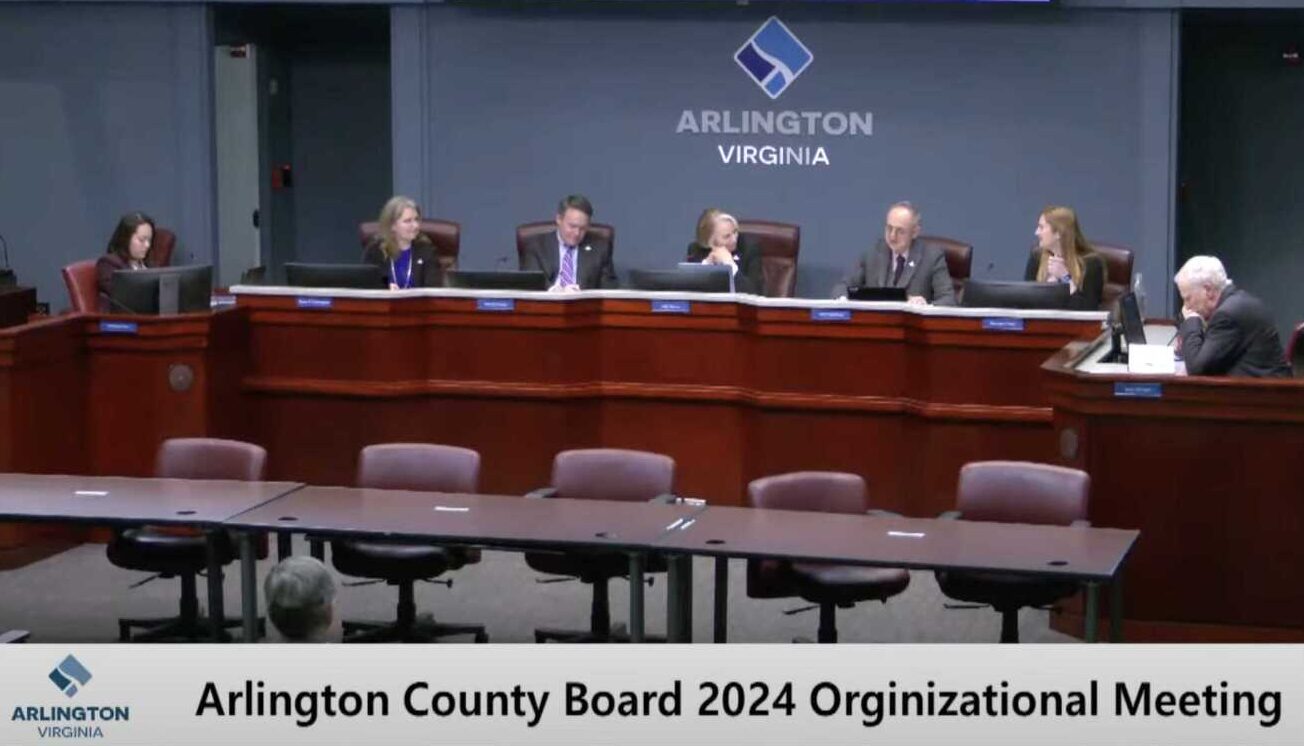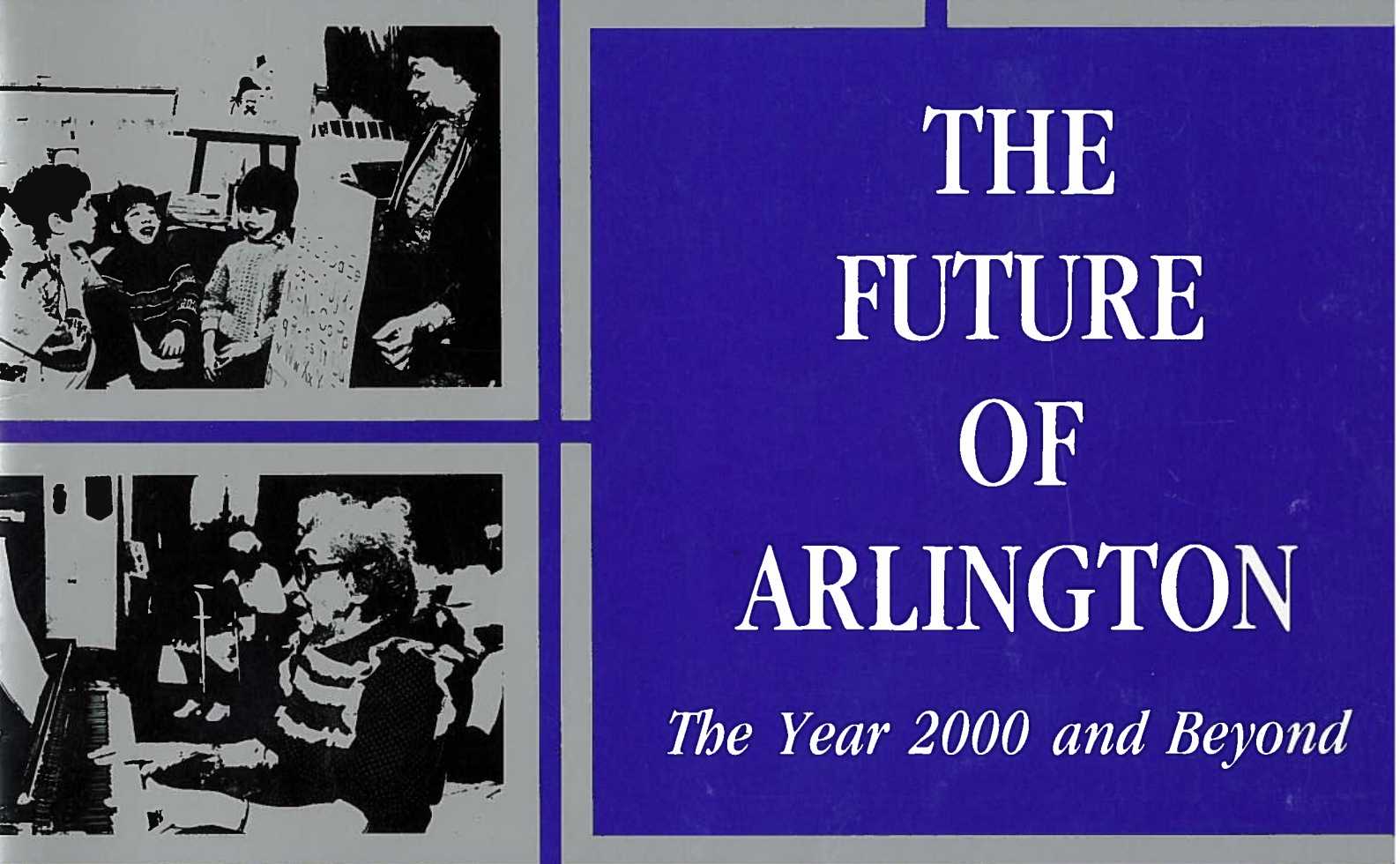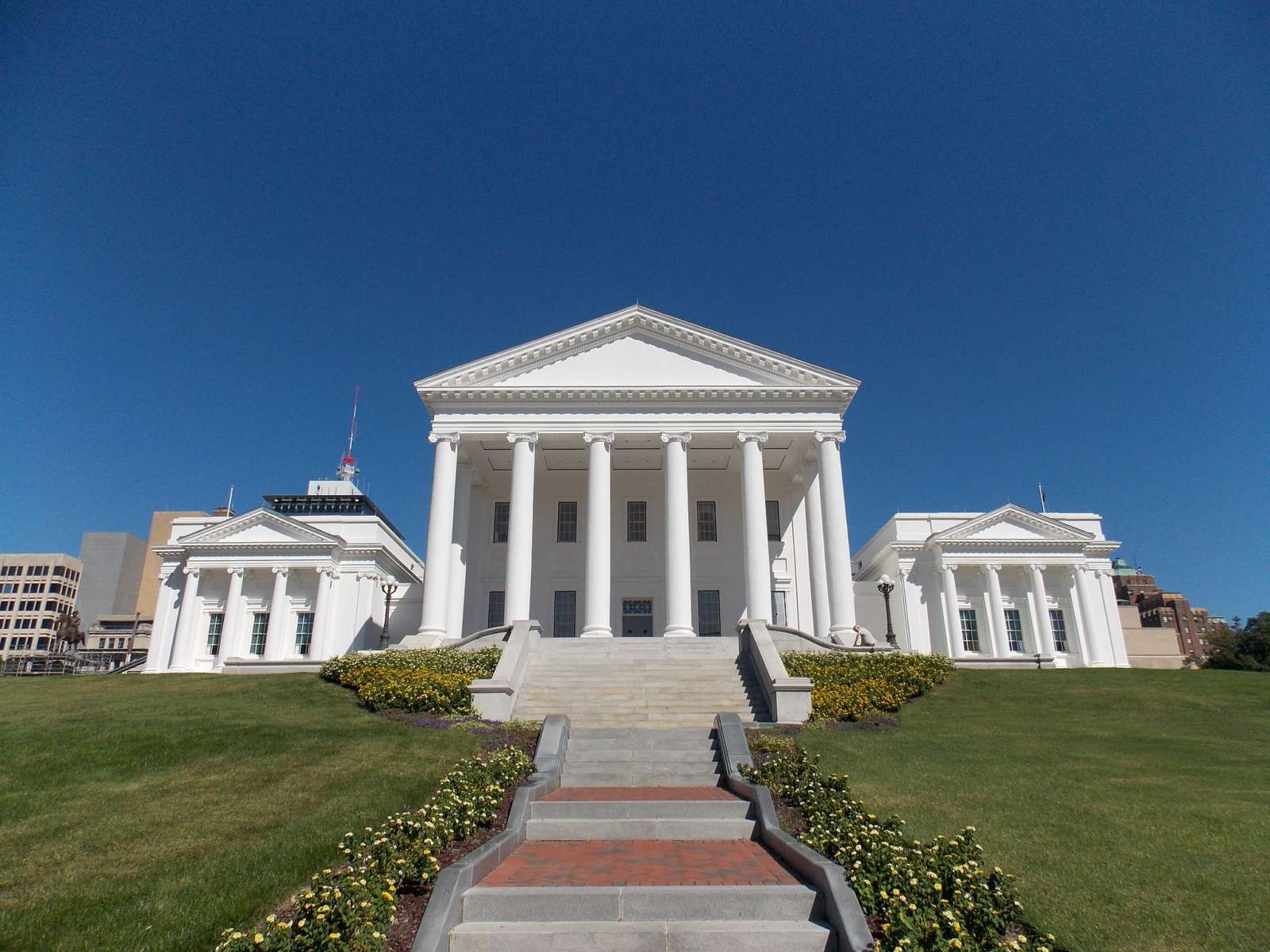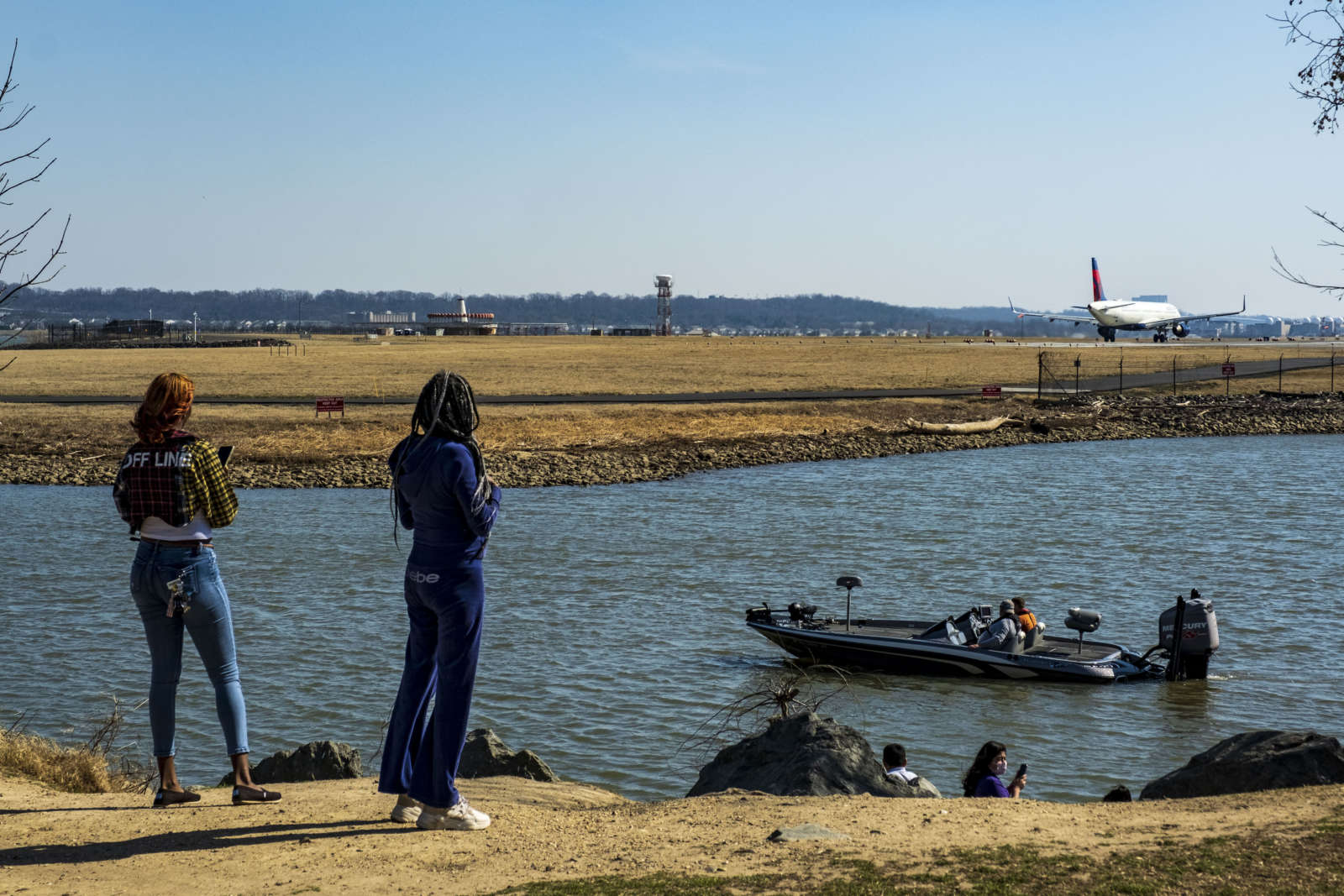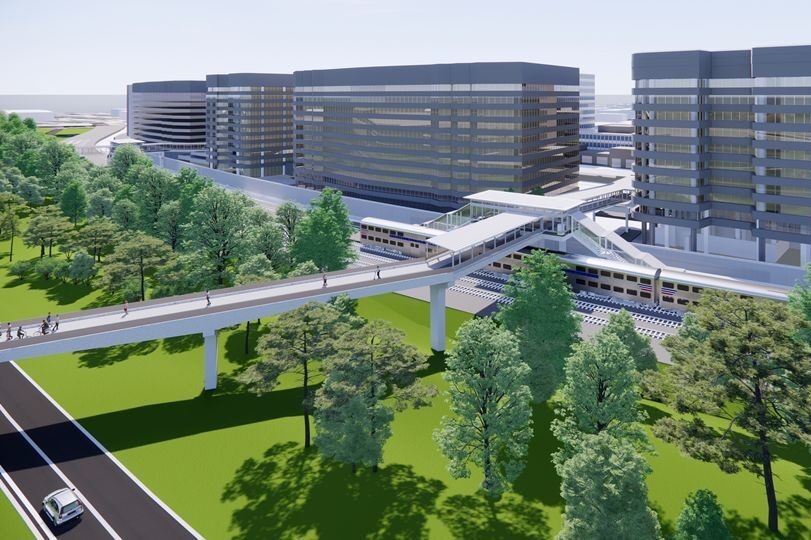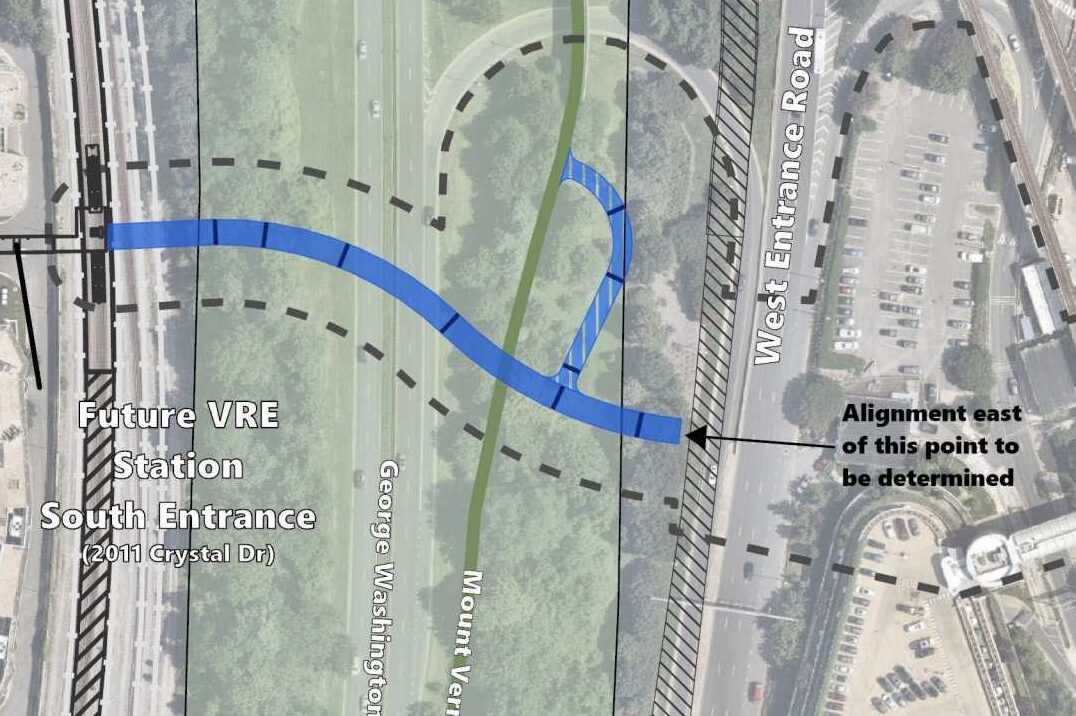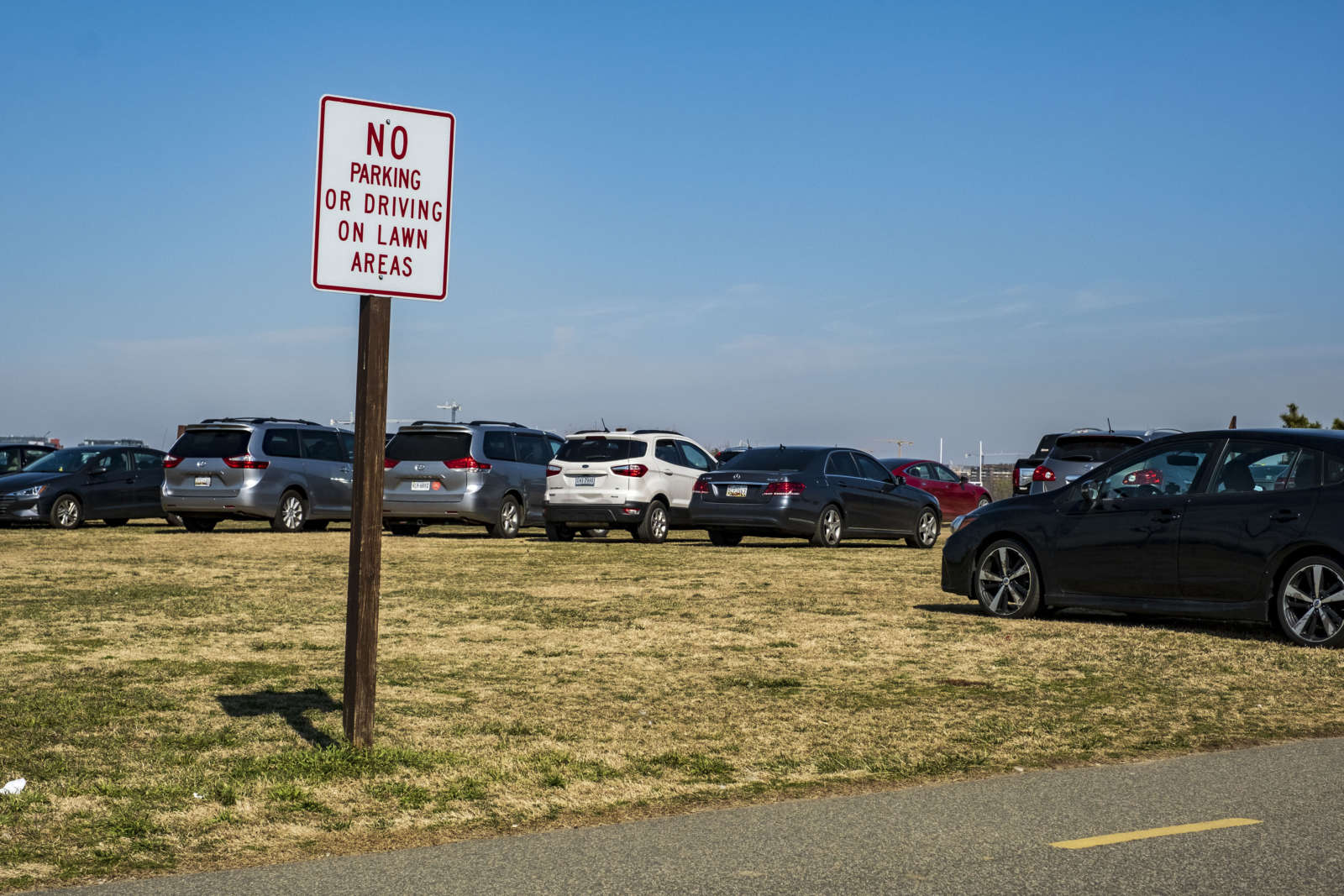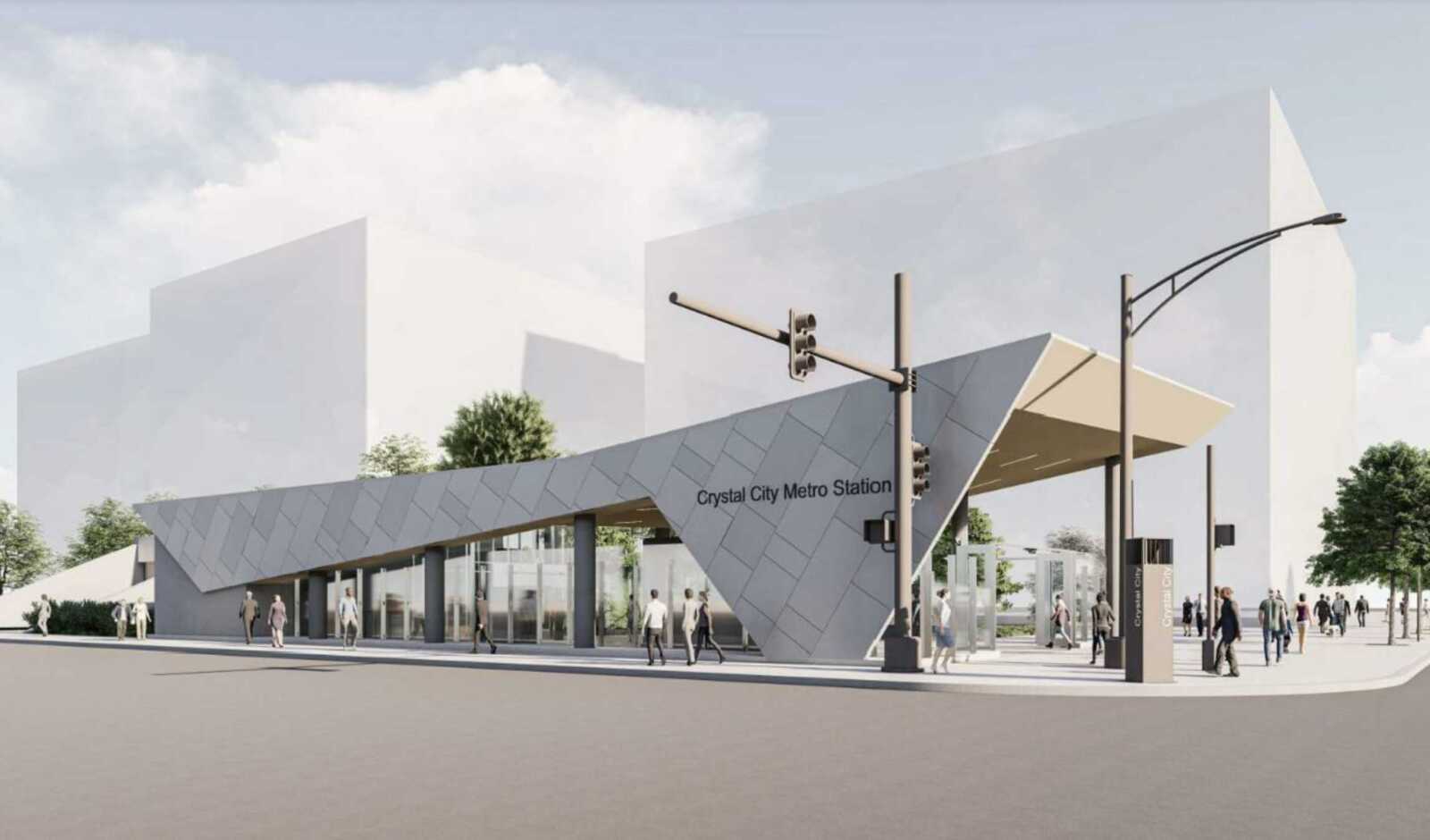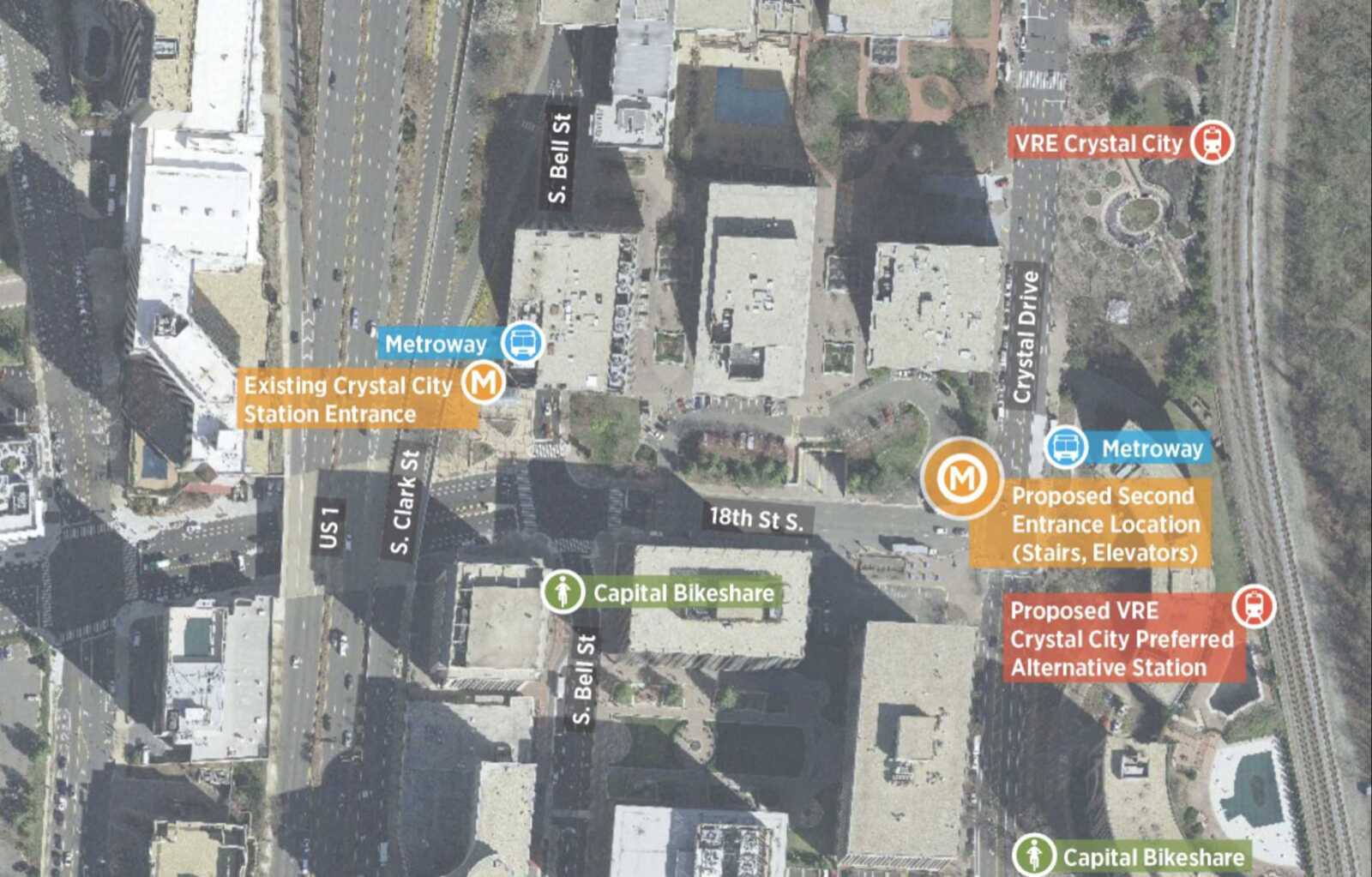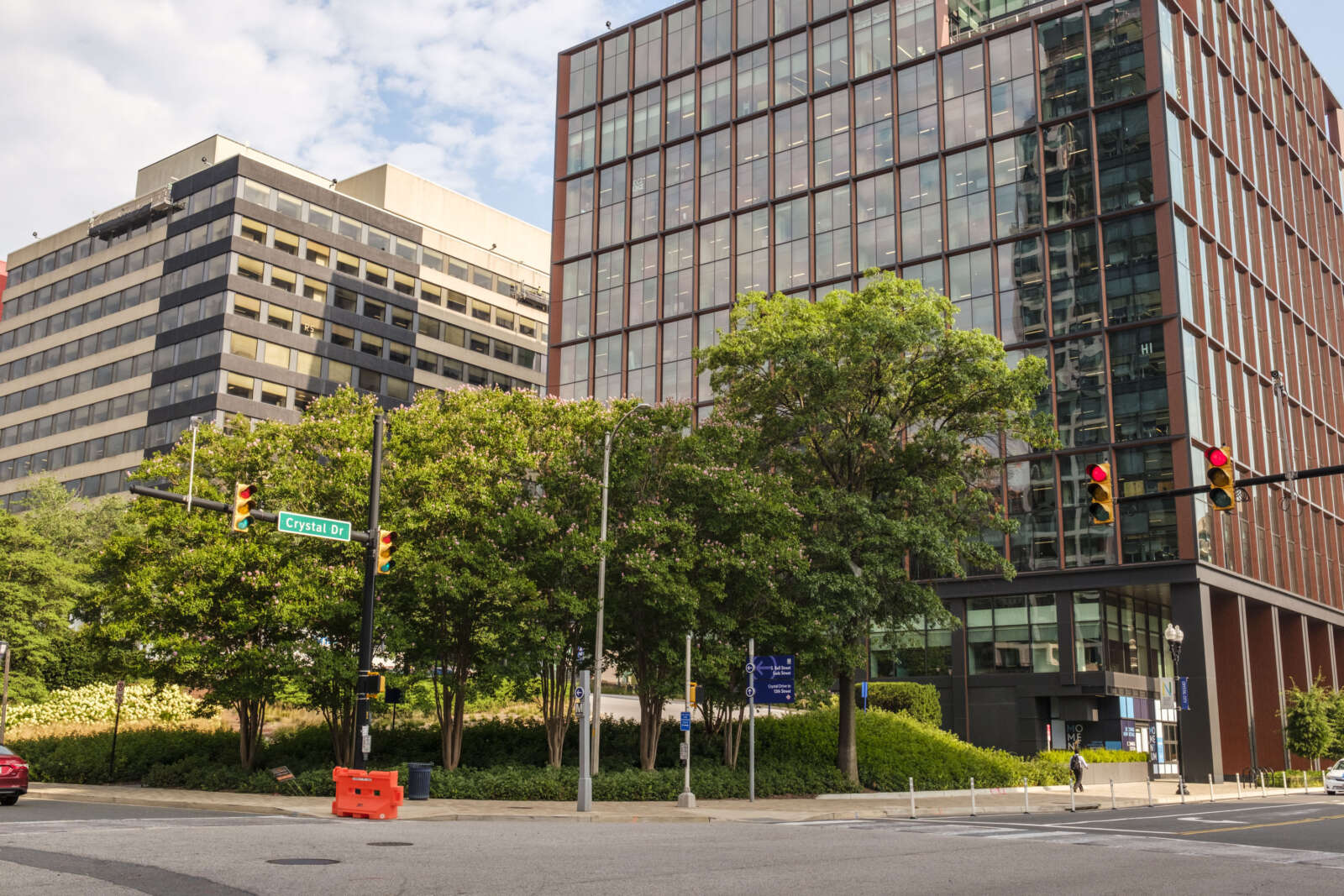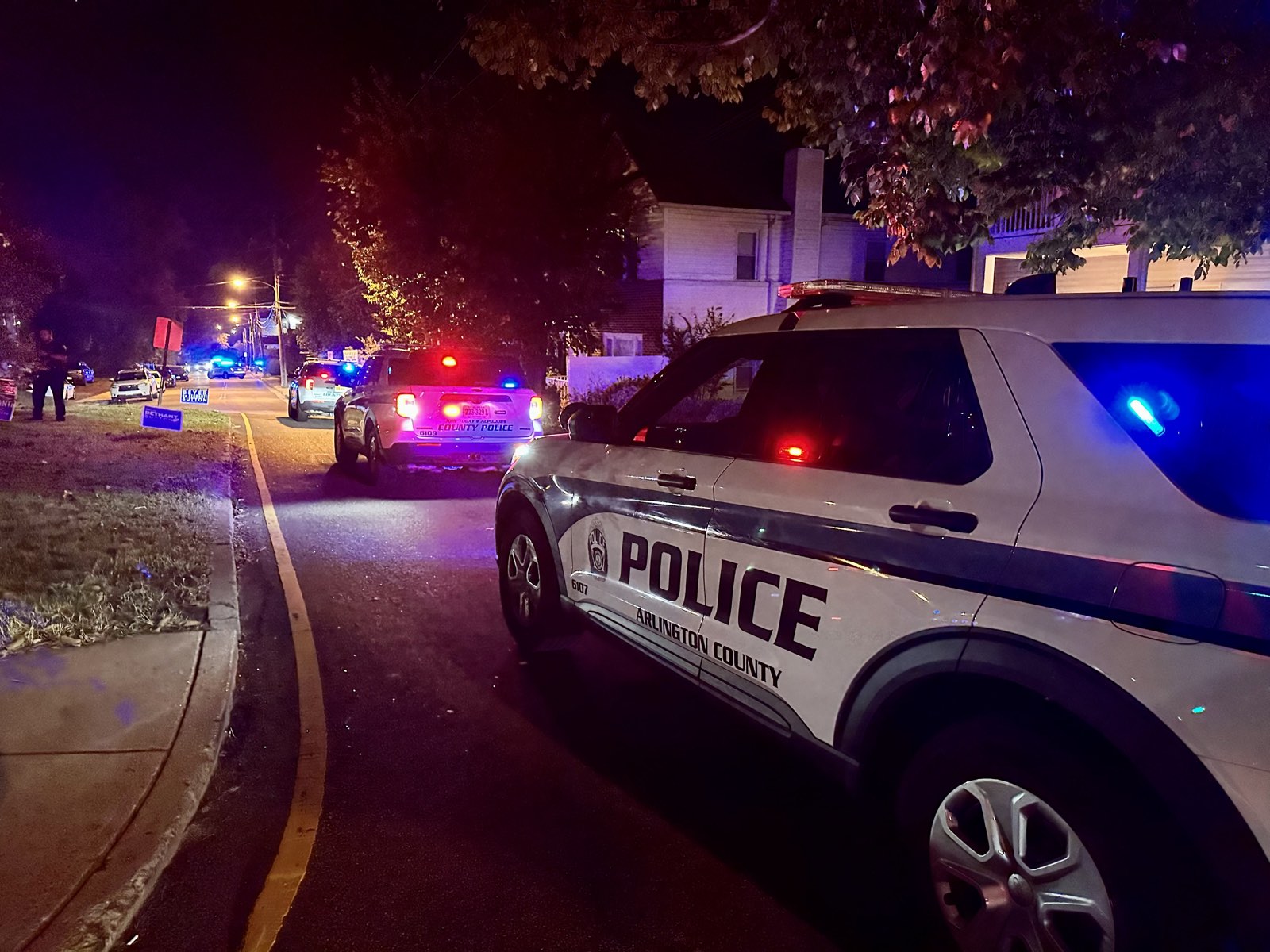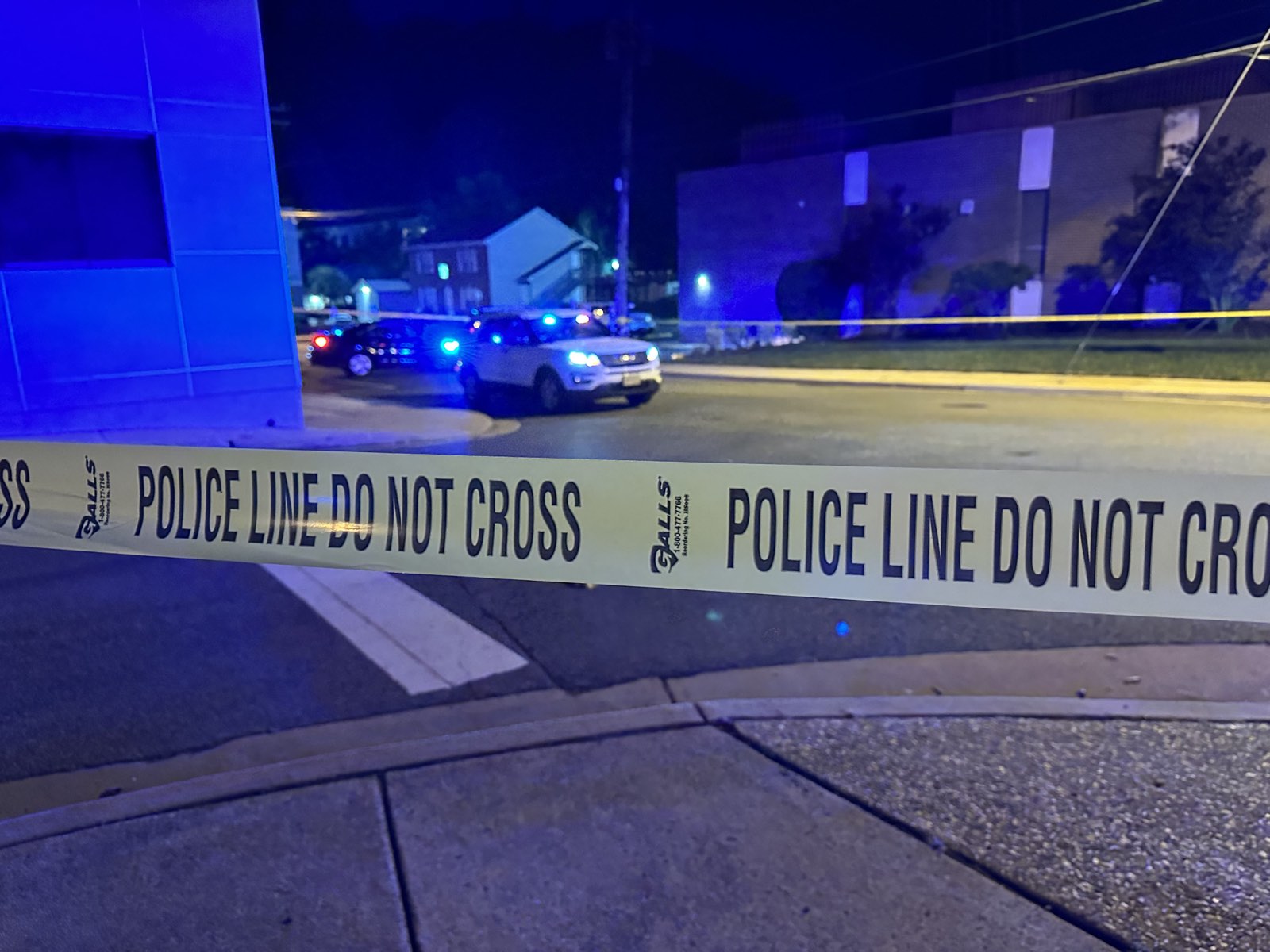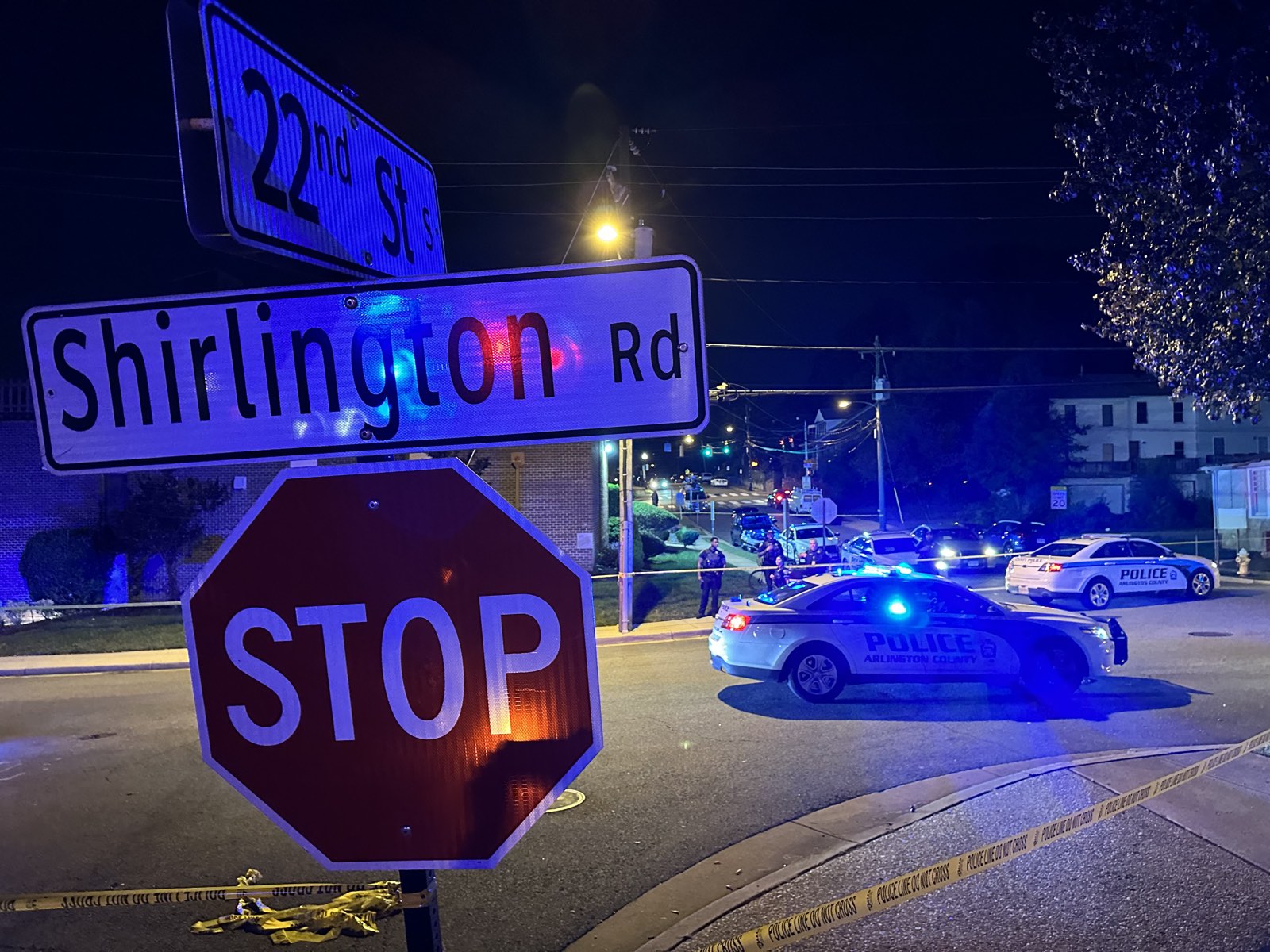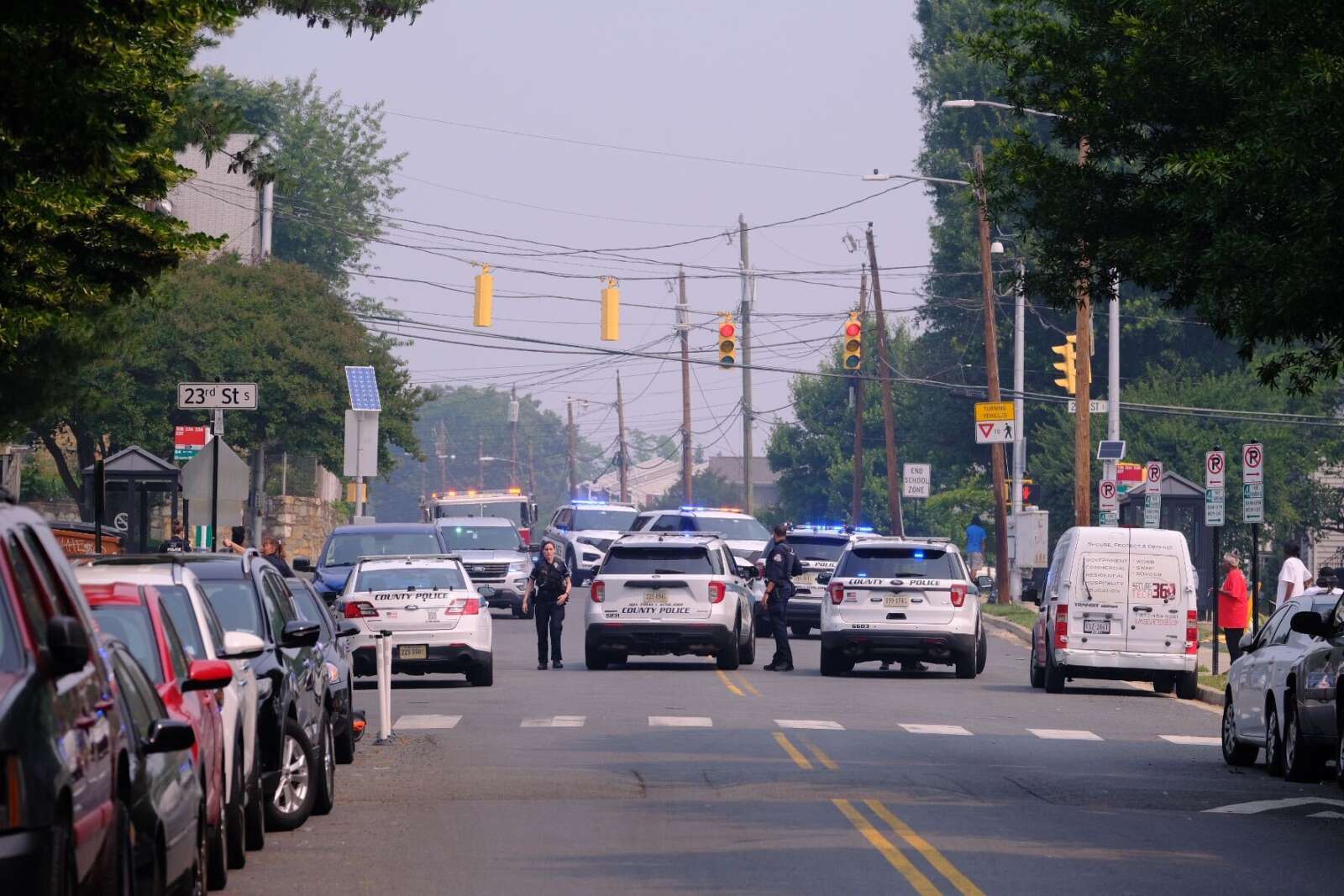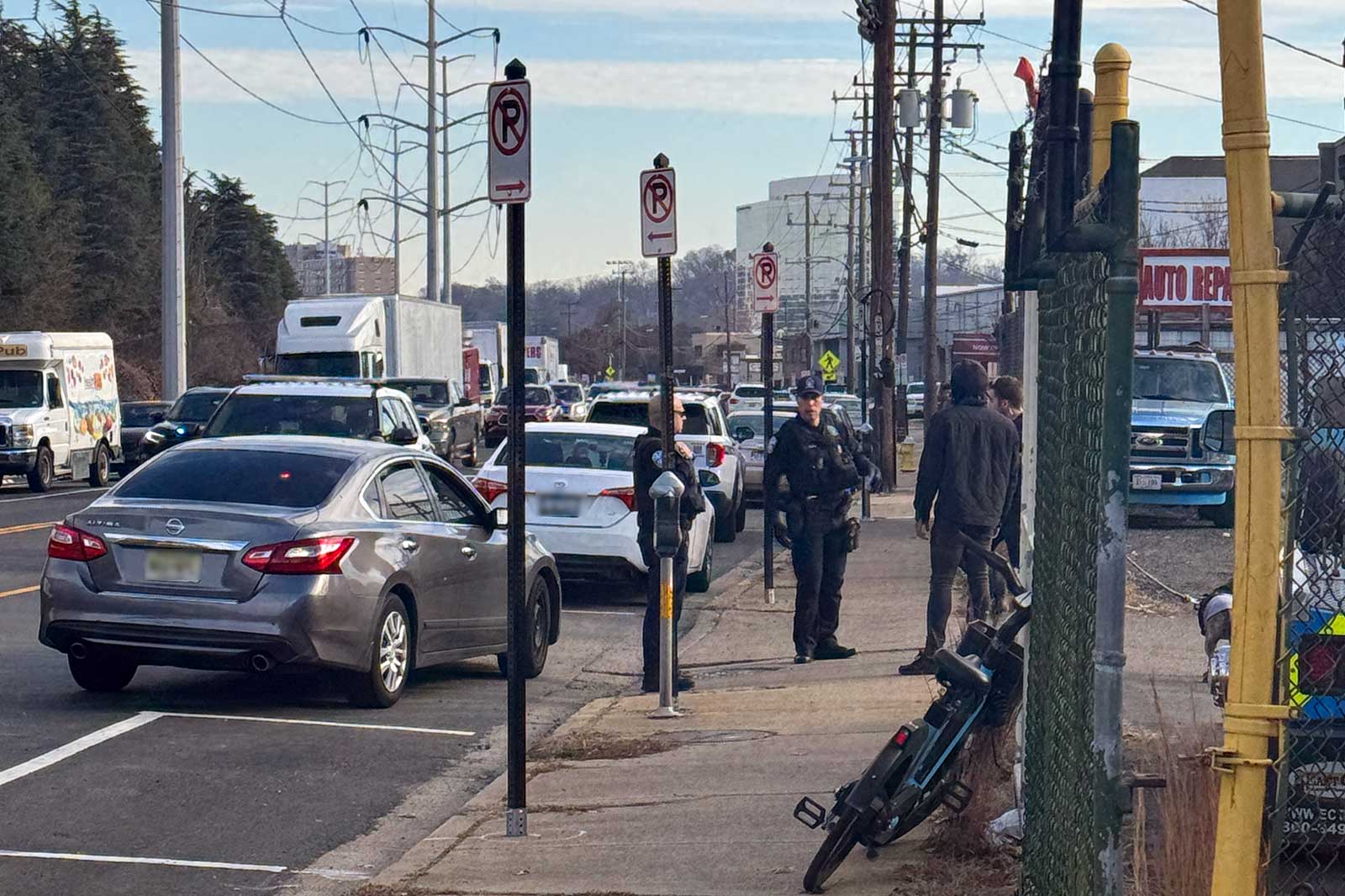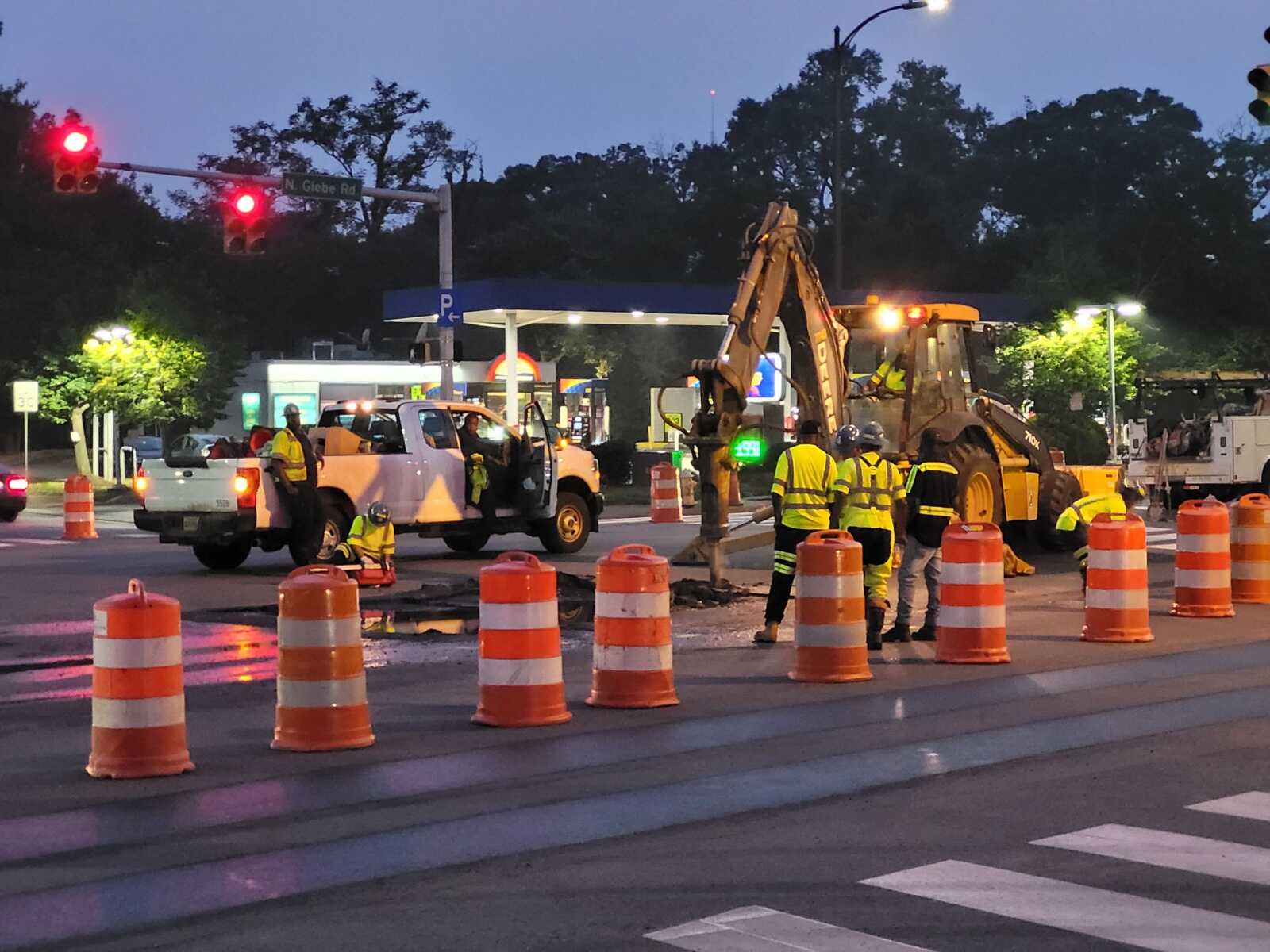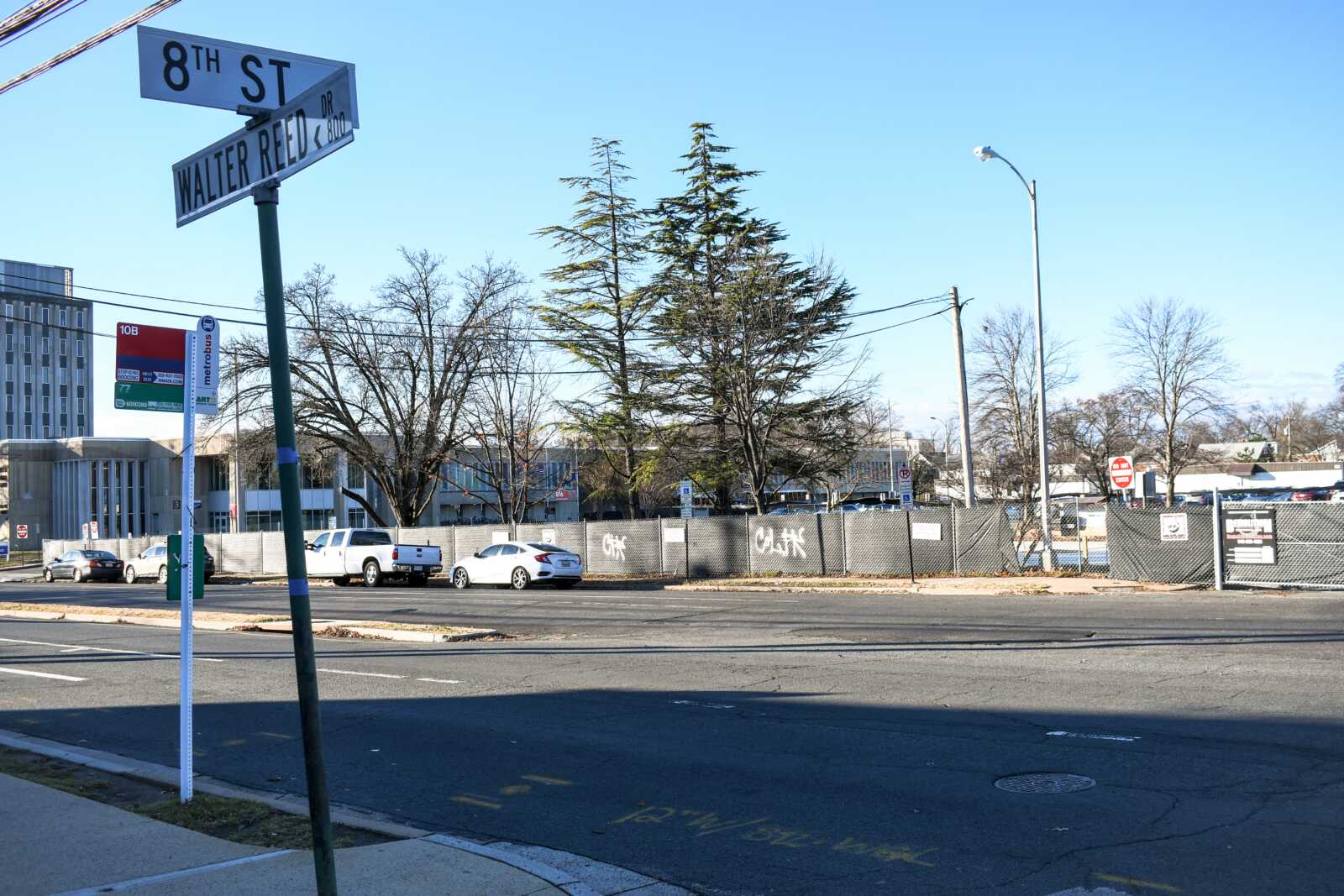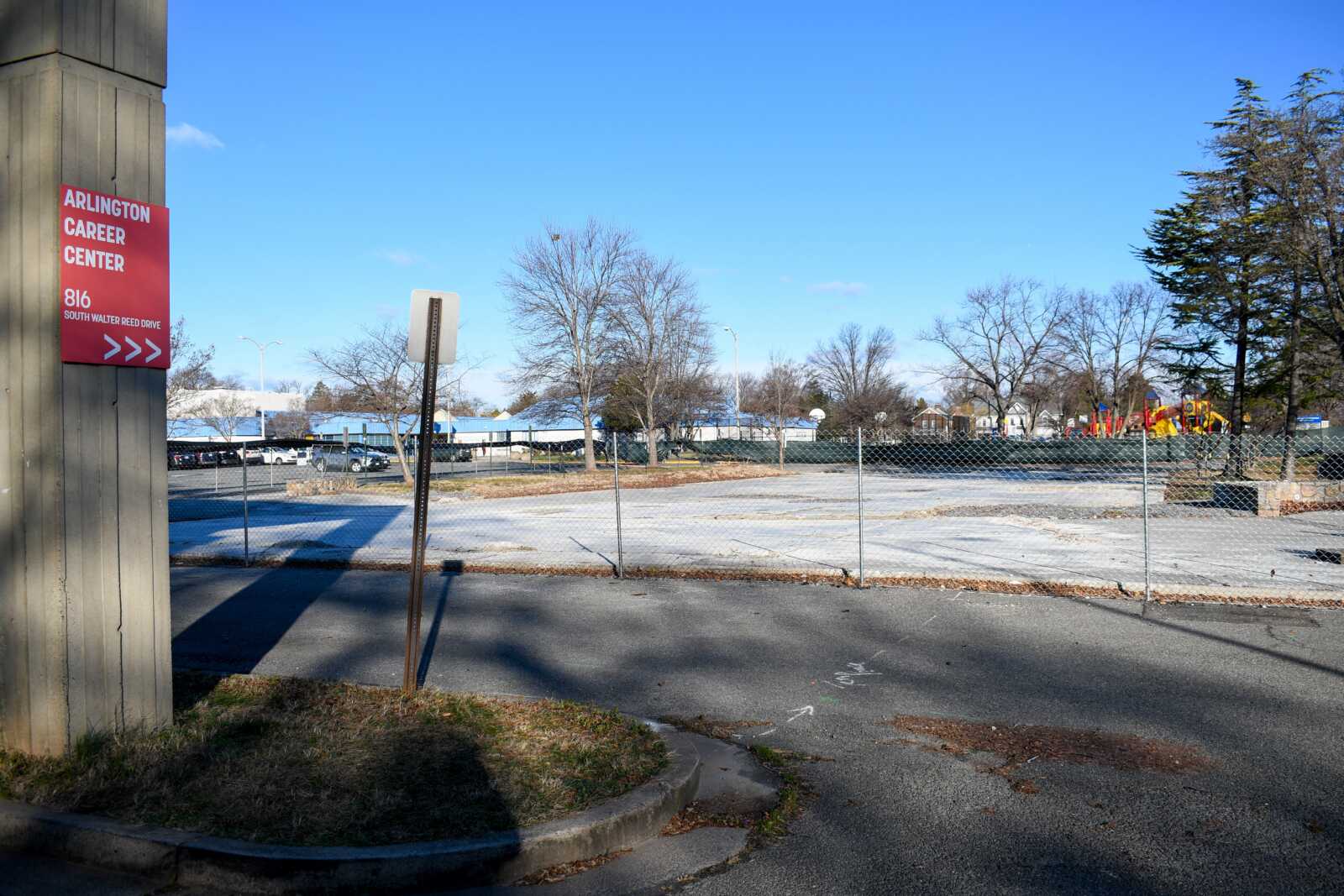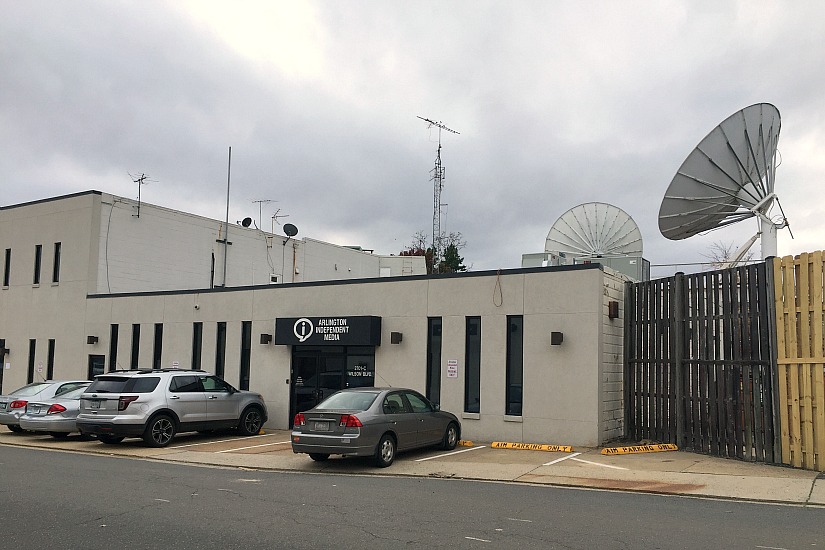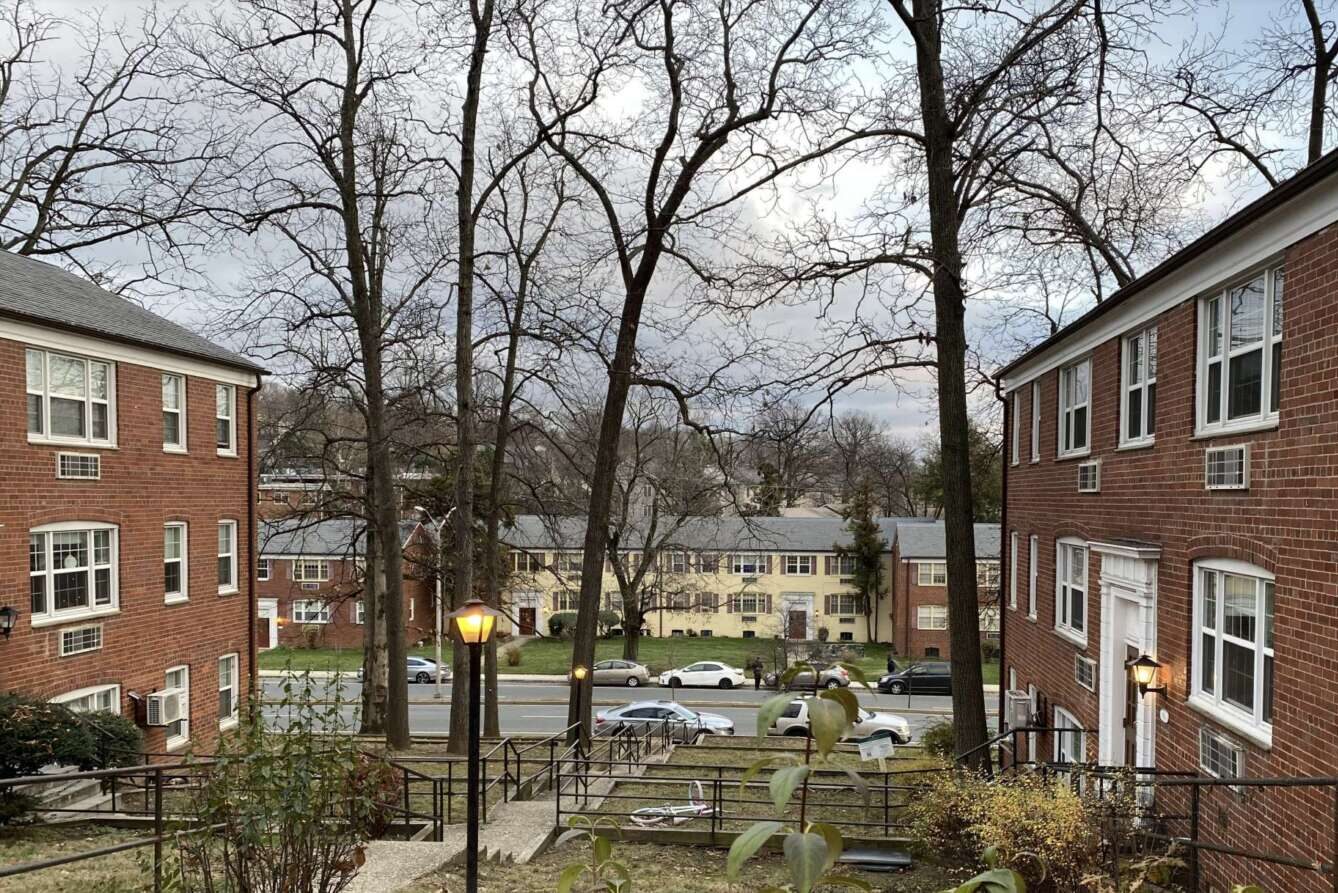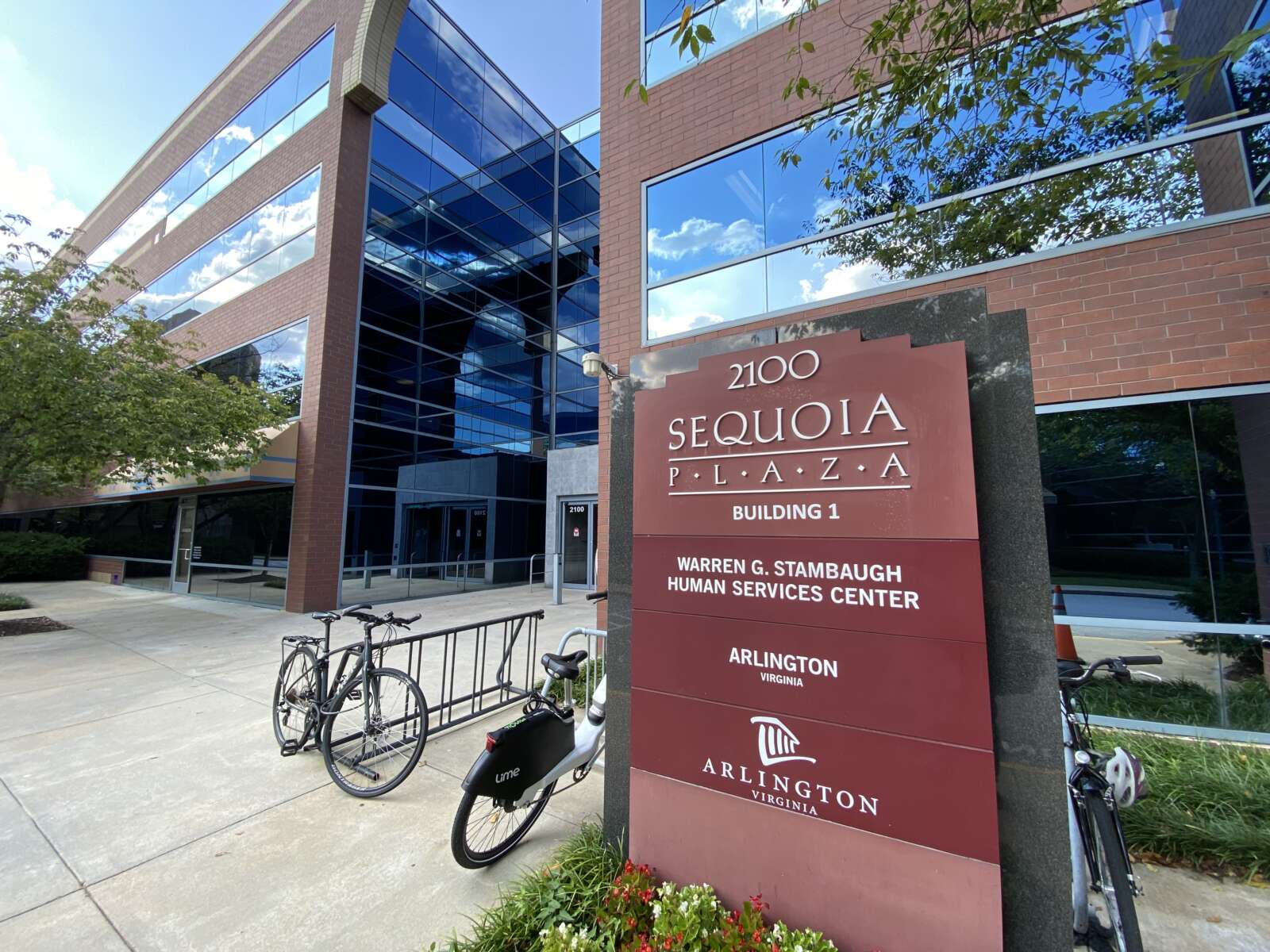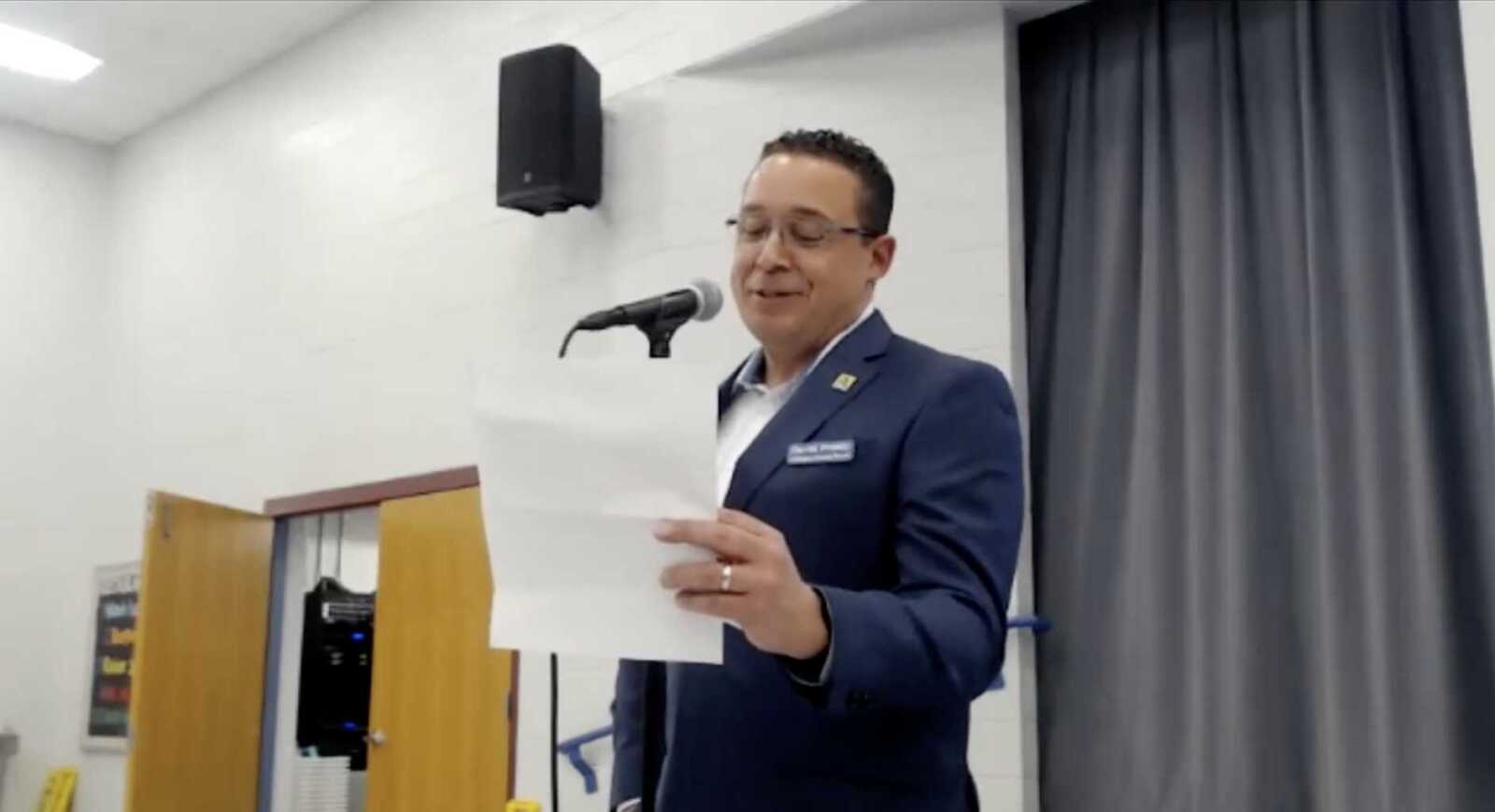
Arlington School Board Vice Chair David Priddy says he will not be seeking another term.
He was elected in 2020 along with Cristina Diaz-Torres, who currently serves as the School Board Chair and last month announced that she too would step down after one term. Both of their terms expire at the end of this year, meaning two seats are up for election this year.
“Although I’m making this announcement tonight, there is still one year left on my term,” Priddy told Arlington Democrats during the party’s reorganization meeting last night (Wednesday). “So I will continue to stand on the pillars that you put me in office to enact. Thank you for allowing me to serve the Arlington community.”
Priddy said he would not repeat the “litany of accomplishments and the progress that we have made on the School Board” that Diaz-Torres mentioned in her farewell speech. Instead, he rallied Democrats around the presidential election year ahead.
“The Arlington Democrats are truly a force to be reckoned with,” he said, pointing to the work local Democrats have done, in Arlington and beyond, to promote the values of the Democratic Party. “I bring this up because this year is a presidential election year, which means it’s time to mobilize and elect the right people for office.”
Priddy noted School Board hopefuls have until Feb. 16 to file with Arlington Democrats. The party cannot officially nominate a candidate but it can opt to endorse candidates who pledge to be a Democrat.
The party decided to hold an in-person caucus if at least three candidates emerge, according to the 2024 caucus rules discussed last night. The caucus would be canceled if only two emerge and the party would decide whether to endorse those candidates in March.
Nabbing the party endorsement carries significant weight in Arlington and, though some have criticized this process for tipping the scales in favor of well-connected establishment candidates, it remains popular among party members.
After Priddy’s announcement, Chen Ling announced his candidacy for School Board. He introduced himself as the parent of a third grader at Ashlawn Elementary School and the director of engineering at a Fortune 500 company.
He said the School Board needs a “culture of transparency, respect and trust.”
“Some of the actions taken by the School Board in the last few years instead caused confusion and discontentment between parents and teachers,” he said, noting “seemingly suboptimal proposals” that created an “antagonistic relationship between the community and School Board.”
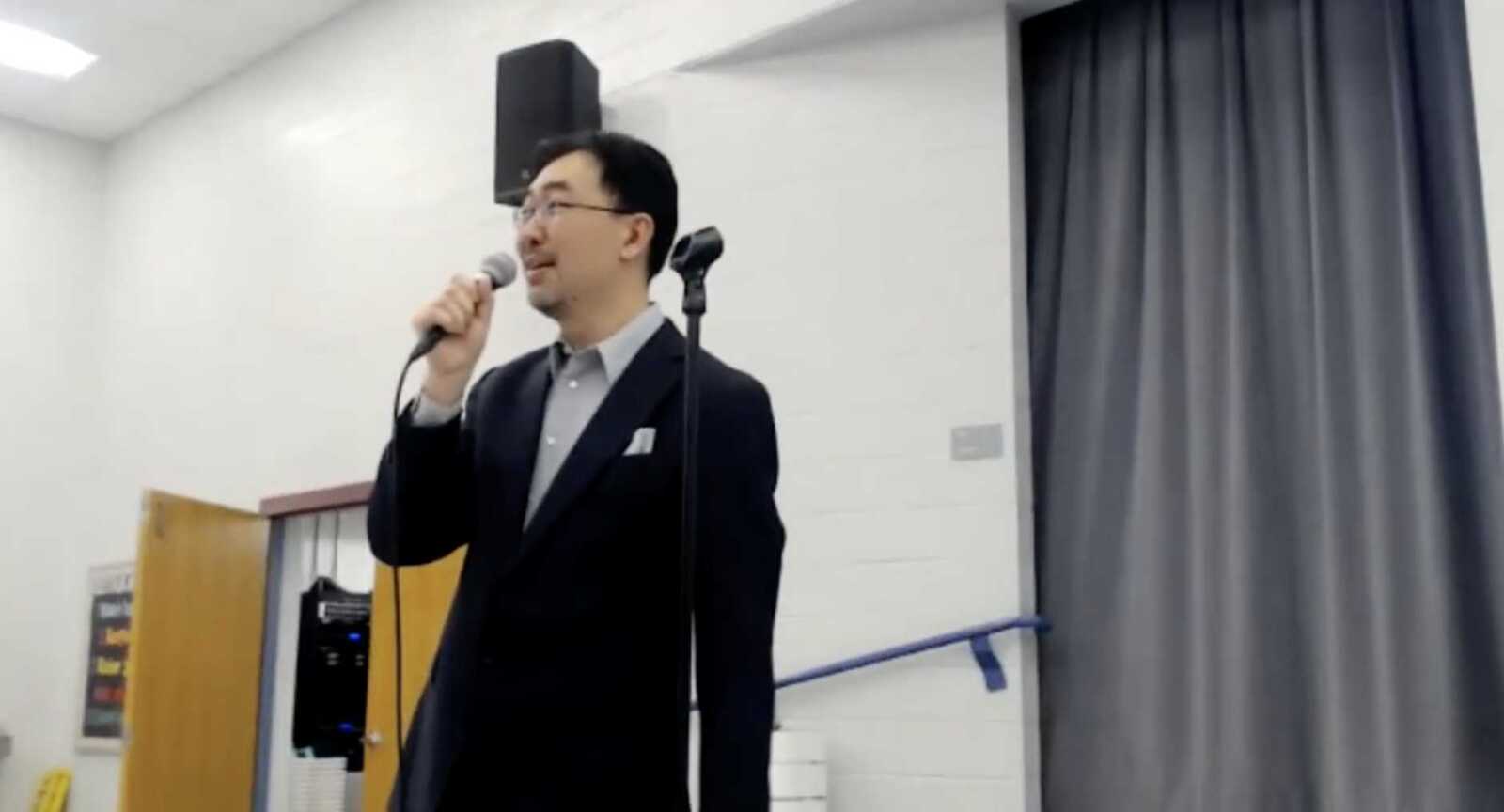
“That is a real shame because I’ve watched the School Board work and these are some really caring, thoughtful people and they are trying their best,” he said. “What I think they lack is tools to make the best decisions, they lack the tools to provide transparency and build trust.”
The School Board should share with parents all the proposals they consider, as well as their trade-offs and reasoning behind a decision, Ling said.
“It’s okay if the final proposal is somehow detrimental to my child if I know that it serves for the community and the school system at large. That’s something that I haven’t seen at that level,” he said. “It’s not enough to provide an answer, even if it’s the correct answer. We need to show our work.”
Ling said he would like to see fewer curriculum changes, as well as more automation of mandated state and federal reporting, so teachers can focus on students. Lastly, he would like to see class size reductions, too.
During the meeting, Arlington County Board candidate Natalie Roy made her pitch to Arlington Democrats. She, and opponent Julie Farnam, both seek the party’s nomination this June in the County Board race to fill the seat occupied by Chair Libby Garvey. Garvey has not yet announced if she will seek reelection.
“I believe the County Board needs a voice like mine, advocating for transparency and responsiveness, I am committed to common sense leadership that brings us all together,” Roy said.


